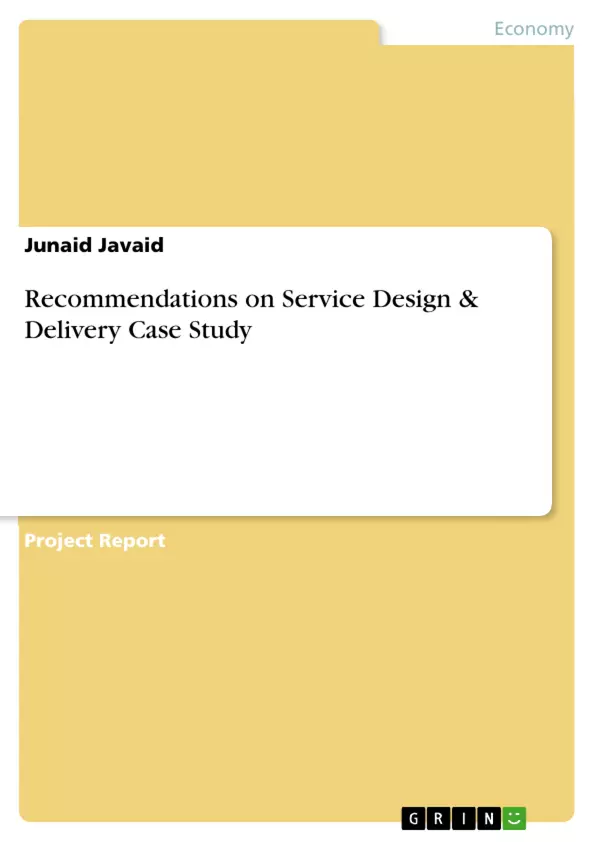This report is written on the topic of care service design and its delivery pattern. The scope of this report is very broad as it has been focused on the Recommendation-1 outlined in the Mid Staffordshire NHS Foundation Inquiry report. This report based entirely on the Recommendations which I proposed to the Care Trust to follow on the timely manner as currently the Patients’ Trust ranked higher in term of mortality rate and also categorised as poor in delivering standard services to all patients. As a Board Director of Trust I have analysed that Trust’s patients are facing the significant problems (understanding the treatment options, getting brief explanations about their medications, not having access to the critical information and not receiving responsive and compassionate service from the Trust or Caregivers). And all of these issues are arising due to the failure of the trust in categorising the care service standards which has diverted their intention to other matters rather to focus on their patients’ need first. In order to resolve the problem regarding to the care service design and its delivery pattern and also to improve the patients’ satisfaction, I proposed the Trust to implement Patient-Centered Healthcare system. This system would allow the Trust to enhance the respect level for their patients’ values and preferences which would also create awareness of quality of life issues among the care taking staff members. There are about seven factors (Leadership, Strategic Vision, Involvement of Patients, Supportive Work Environment, Systematic Measurement, Quality of Physical Environment and Supportive Technology) which would be contributed a lot to the success of Patient-Centered Healthcare System. The Trust must have to pursue certain strategies which would assist Trust in implementing Patient-Centered Healthcare System on authentic basis. These strategies are classified into two groups. The first one would strengthen the Trust capacity to accomplish Patient-Centered Care at the Organisational level. And the second group would meant to alter external reward in the Healthcare system which then guided the Trust to achieve the delivery of high standards care services to their patients. [...]
Table of Contents
- Introduction
- Background-Context
- Aims & Objective
- Problem Statement
- Recommendation
- What is Patient-Centered Healthcare System?
- Key Success Factors of Patient-Centered Healthcare System
- Leadership
- Strategic Vision
- Patients' Involvement
- Supportive Work Environment
- Systematic Measurement & Feedback
- Quality of Physical Environment
- Supportive Technology
- Strategies for Leveraging Change
- Organisational Level Strategies
- System Level Strategies
- Conclusion
- References
Objectives and Key Themes
This report aims to address the ongoing issue of a Trust's failure to prioritize the delivery of high-quality care services to its patients. It proposes a framework based on a Patient-Centered Healthcare system to improve patient satisfaction and clinical outcomes. The report also outlines strategies for implementing this system at both the organizational and system levels.- Patient-Centered Healthcare System
- Key Success Factors of Patient-Centered Healthcare
- Strategies for Implementing Change
- Organizational Level Strategies
- System Level Strategies
Chapter Summaries
Introduction
This chapter introduces the report's structure and focuses on the problem statement and recommendation sections. It emphasizes the importance of the proposed Patient-Centered Healthcare system for improving service delivery standards and patient satisfaction.Background-Context
This section delves into the concept of healthcare services, emphasizing the importance of providing high-quality care that prioritizes patient needs. It discusses the three levels of healthcare services (primary, secondary, and tertiary) and the role of healthcare trusts in establishing partnerships with patients and their families.Aims & Objective
This chapter explains the report's purpose as a proposal to the Trust Board to address the issue of inadequate care service delivery. It aims to suggest a framework for improving patient satisfaction and clinical outcomes, and to propose strategies for timely implementation.Problem Statement
This section highlights the issues identified in the Staffordshire NHS Foundation Inquiry report, such as patients' struggles to understand treatment options, access information, and receive compassionate care. These problems arise from the Trust's failure to prioritize care service standards.Recommendation
This chapter introduces the proposed Patient-Centered Healthcare system as a solution to the identified problems. It discusses the system's core principles and its key success factors, including leadership, strategic vision, patient involvement, and supportive work environment.Strategies for Leveraging Change
This chapter focuses on the strategies needed to implement the Patient-Centered Healthcare system effectively. It outlines both organizational and system-level strategies aimed at enhancing the Trust's capacity to achieve patient-centered care and altering external reward structures within the healthcare system.Keywords
The report focuses on improving patient satisfaction and clinical outcomes by implementing a Patient-Centered Healthcare system. Key concepts include healthcare service design, delivery patterns, patient needs, organizational strategies, system-level strategies, and the importance of leadership, strategic vision, and patient involvement.- Arbeit zitieren
- Junaid Javaid (Autor:in), 2013, Recommendations on Service Design & Delivery Case Study, München, GRIN Verlag, https://www.grin.com/document/281111



